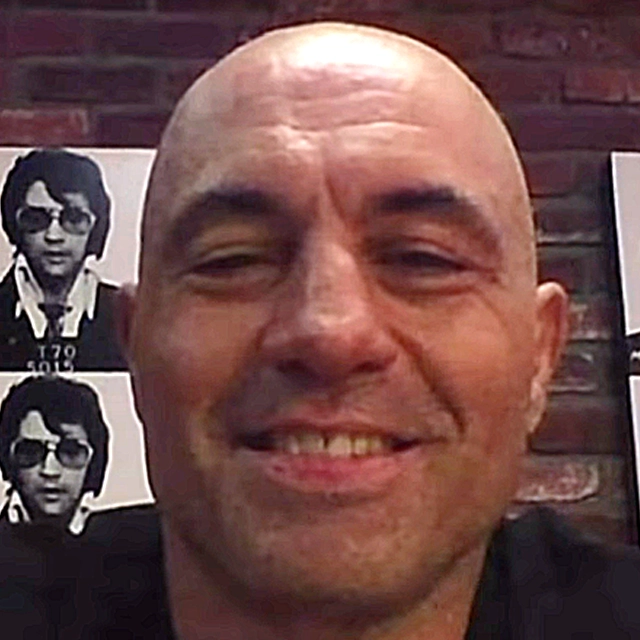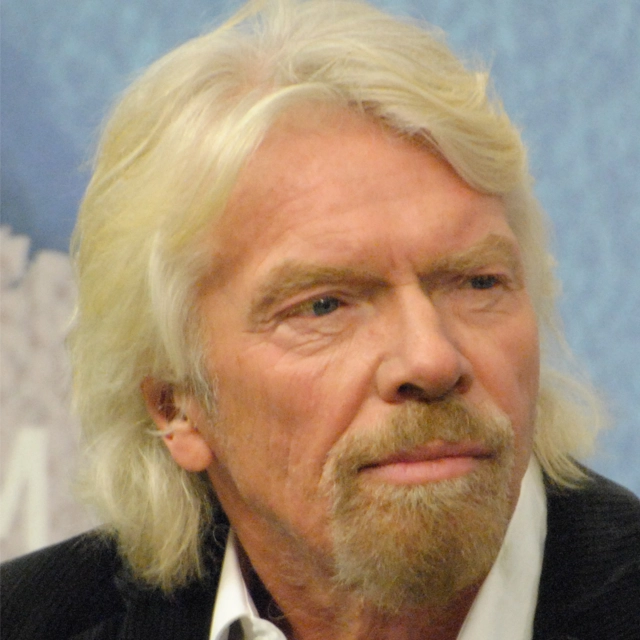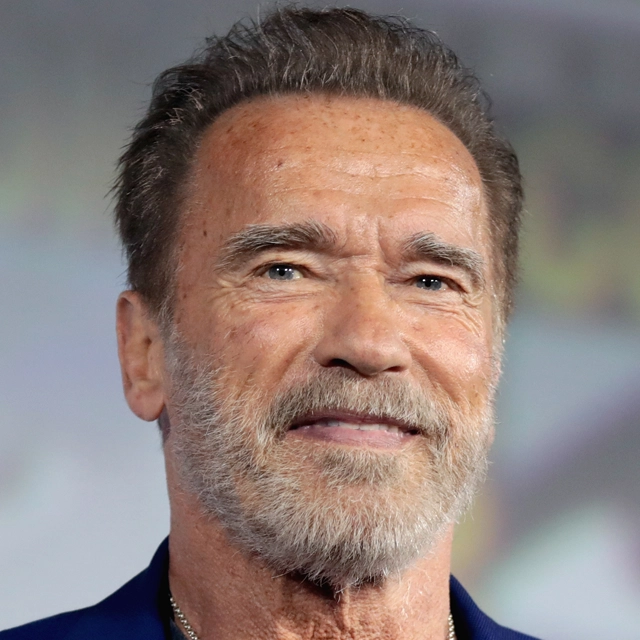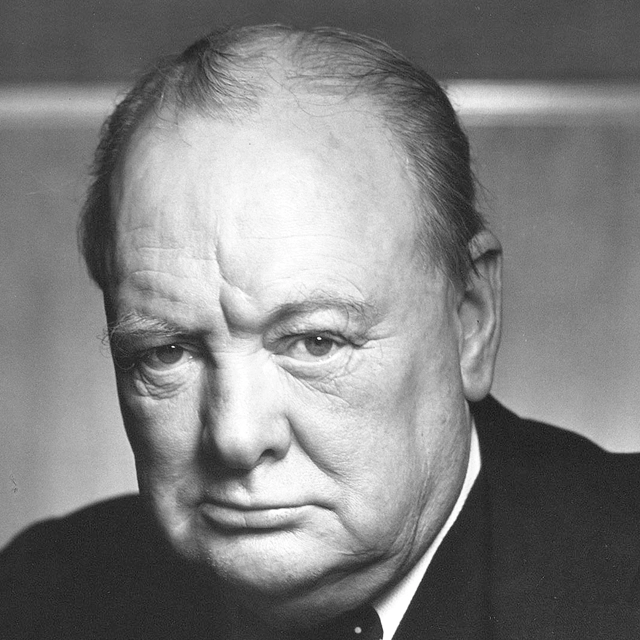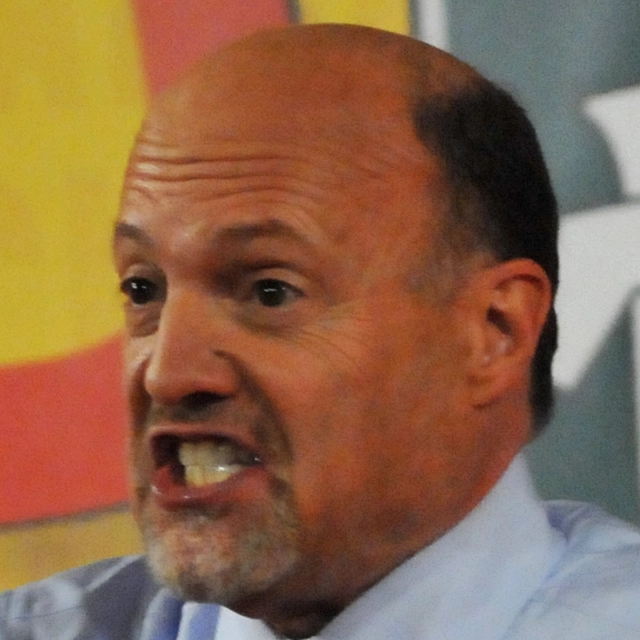Boundaries for Leaders Audiobook Summary
In Boundaries for Leaders, clinical psychologist and bestselling author Dr. Henry Cloud leverages his expertise of human behavior, neuroscience, and business leadership to explain how the best leaders set boundaries within their organizations–with their teams and with themselves–to improve performance and increase employee and customer satisfaction.
In a voice that is motivating and inspiring, Dr. Cloud offers practical advice on how to manage teams, coach direct reports, and instill an organization with strong values and culture.
Boundaries for Leaders: Take Charge of Your Business, Your Team, and Your Life is essential reading for executives and aspiring leaders who want to create successful companies with satisfied employees and customers, while becoming more resilient leaders themselves.
Other Top Audiobooks
Boundaries for Leaders Audiobook Narrator
Henry Cloud is the narrator of Boundaries for Leaders audiobook that was written by Henry Cloud
Dr. Henry Cloud is an acclaimed leadership expert, psychologist, and New York Times bestselling author whose books have sold over 10 million copies. In 2014, Success magazine named Dr. Cloud one of the top 25 most influential leaders in personal growth and development. He graduated from Southern Methodist University with a BS in psychology and completed his PhD in clinical psychology at Biola University.
About the Author(s) of Boundaries for Leaders
Henry Cloud is the author of Boundaries for Leaders
More From the Same
- Author : Henry Cloud
- Boundaries with Kids
- How People Grow
- Integrity
- Safe People
- Rescue Your Love Life
- Publisher : HarperAudio
- Abraham
- American Gods [TV Tie-In]
- Dead Ringer
- House of Sand and Fog
- Prey
Boundaries for Leaders Full Details
| Narrator | Henry Cloud |
| Length | 7 hours 36 minutes |
| Author | Henry Cloud |
| Category | |
| Publisher | HarperAudio |
| Release date | April 16, 2013 |
| ISBN | 9780062249791 |
Subjects
The publisher of the Boundaries for Leaders is HarperAudio. includes the following subjects: The BISAC Subject Code is Business & Economics, Motivational
Additional info
The publisher of the Boundaries for Leaders is HarperAudio. The imprint is HarperAudio. It is supplied by HarperAudio. The ISBN-13 is 9780062249791.
Global Availability
This book is only available in the United States.
Goodreads Reviews
Tim
March 02, 2021
HIGHLY recommend this unfortunately named book. From the title, I assumed it would be a book about how to have good work/life boundaries.It is not at all about personal boundaries. It's one of the best leaders books I've ever read.In some ways a best of the best book - bringing together ideas from some of the best leadership books out there - Thinking Fast and Slow, Death by Meeting, 4 Disciplines of Execution.Dr. Cloud is concise and very practical.One thing Dr. Cloud addresses like no other book I've read: The Emotional Climate that a leader creates. This one makes a great audiobook.
Shaun
February 07, 2016
After having read so so many books, am so glad that Cloud delivers one that I like so so very much! He draws from a lifetime of psychological study and experience in consulting with CEOs in writing this book. Real life stories are used to great effect to illustrate complicated or abstract principles. Sometimes he gets lost in retelling the stories that he forgets to reinforce the point (and we have to refer to the subtitle to figure out what he is trying to say).Nevertheless, I highly recommend this book! Alongside Hybel's Courageous Leadership and McIntosh & Rima's Overcoming the Dark Side of Leadership, this book would feature in my must-give book list to any leader I care about. I first read a copy borrowed from the school library, and I liked it so much that I bought one for myself.Here's a quick summary of the gems in the book (spoiler warning!):Leaders can motivate or demotivate their people (xiv) and one of the aspects of a leader's behaviour that make everything work is his/her "boundaries," which is a structure that determines what will exist and what will not (xv).A leader is always going to get a combination of two things; what you create and what you allow (p15).In the language of Apple, 'who is the DRI, the directly responsible individual? (who is over and allows the 'problem' employee to be difficult or not perform; if that employee is confused about the strategy or direction, who is it that sets them; p15).The central principle of boundaries is ownership. Leaders are the one who define and create the boundaries that drive the behaviour that forms the identity of teams and culture and sets the standards of performance (p16).Highlighted how returning Apple CEO Steve Jobs diagnosed the problem as a lack of focus and pruned 70% of models and products with a much-needed clarity through setting a positive boundary. The employees were to just make four great products: "consumer," "pro", "desktop" and "portable" (p19).People dont leave jobs - they leave bosses (p56).The importance that there is no relational consequences to making a mistake. That is what people need from their leaders, the knowledge that their leader is for their success, and if a mistake is made, that leader will stand beside them and help them learn and improve, not punish them... a "getting better" orientation goes much further than a "being perfect" orientation (p71).Our brains need positive relationships to grow and function well (p83).Most leaders are "meeting'ed to death" ... most of these meetings are not doing much to build connection and unity. The answer is usually not more but different meetings of a certain type and more connection as a result of whatever meeting do occur (p86).In chapter 6 (p103-108), through a real life scenario, Cloud highlights the far reaching effects a leader with negative thinking can have on an entire organisation. This is in contrast to another company's founder who started it with an ingenious plan while still in bankruptcy (p103); this guy does not suffer from such negative thinking.In contrast to learned helplessness (p108-116), a leader can focus his team's energy on working on controllable factors that directly affects the desired outcomes of the organisation (p126).In chapter 8 (p153-166), Cloud illustrates the term "dead fish" with a real life scenario, which means something like the elephant in the room that needs to be addressed, in order for the team to accomplish a specific vision and mission.The job of the leader is to form a team around a common purpose or goal, and then work with the team to figure out what that team is going to have to value and behave like to reach that goal (p165-6). It does not belong to a person, but to the person as a whole. As a result, it is going to take the entire team to make it happen. That is the essence of a team (p170).The entertaining accounts of how people wanted feedback given to them demonstrated how important it was to get to know each individual's communication style and vulnerabilities. The needed feedback and difficult-to-hear truths prevented future hiccups, as they knew better how to deal with each other (p175).We make investments when we feel trust, (p186-7) which grows when:-we feel understood (p173-180)-we display credibility and character (p180-3)-we believe in someone's capacity and ability (p183-4)-someone has a built a good track record (p184-6)While internal advisers are essential, outside ones are different. They protect you by having no conflict of interest; they are only there to help you, not to serve themselves, if they are good ones (p203).Set very, very strong boundaries with yourself against any tendency you might have toward defensiveness, blame, or denial when given feedback. the weakest leaders are threatened by feedback, and often completely closed off to insights that are so easily seen by others. Strong leaders embrace feedback, seek to understand it, and put it to use. Even when they may disagree, they dont become defensive; instead they engage in dialogue and honest inquiry to figure out where the gaps between their intentions and others' perceptions come from. The feedback may be wrong, but they embrace it to understand it nevertheless. You can embrace and not agree at the same time. Move toward it (p208-9).Dont be ruled by fear (p212-3) or put off change (p214-6): take steps toward overcoming the fear rather put off something indefinitely.Set boundaries on your weaknesses (p219-221) and confine yourself to do what you are gifted at, don't meddle in affairs that would result in operational chaos.It is of utmost importance to do a time audit to identify gaps between stated priorities and time/effort spent. What is vital to achieve your vision? Are those getting on the schedule first? Give them first priority but assign them a time and place, so that they actually get done (p221-6).There is only so much time available and if one says yes to something, that means no to something else. (p224)Give yourself time to refuel after an energy sapping activity, eg. high-conflict situations (p225) or draining people (p226).When you realise that you are ridiculously in charge, it does not mean you are in charge of others or in charge of what goes on in the organization. It also means that you are ridiculously in charge of yourself (p230-1).There are two kinds of high level leaders. One is defined by the work. The other is in a process of actively defining hte work, and they do that by first defining themselves and taking charge of who they are going to be and how they are going to work. They have good self-leadership boundaries (p231).Far too many leaders fail because they think plenty about the plan and not enough about the people (p234). Do all of these things, and you will have science on your side. More important, you will have the people on your side, people who want to work for and with a leader who engenders an environment that attends to our strongest human desires: to connect, create and grow (p236).
Ying Ying
March 29, 2019
In this book, Dr. Cloud talks about many concepts that help a leader be ridiculously in charge. My key take-away is related to how the executive brain works. There are three main functions: directing attention, inhibiting attention and being aware of the process. This means defining the right focus, identifying the things that are 'forbidden', and being able to tell the progress.The concept of inhibiting attention can be related to the concepts discussed in his book Boundaries: When to Say Yes, How to Say No to Take Control of Your Life. Both books propose that being able to say no is essential; in this case, Dr. Cloud talks about 'saying no' in the corporate setting. What are the things that leaders should not do? One should not waste time agonizing over things that are outside of one's control (e.g. financial crush). A 'simple' pill he recommends to bringing attention to things one can control is to draw two columns and write down in one column things that one cannot control and in the other column things that one can control, and then put all of one's attention on the things that one can control.Using our executive brain functions of directing attention, inhibiting attention and keeping a working memory is analogous to using a GPS that guides us to our end goal, and is ultimately what will make us ridiculously in charge.
Donny
March 15, 2018
Very useful information for setting work boundaries in general.
Elisabeth
July 05, 2021
3.5 stars. Rounded up.
Lora
January 07, 2014
Boundaries For Leaders really caught my eye because ...well, it's by Dr. Henry Cloud and he writes great books! And this new one from him does not disappoint.It's not exactly what I thought it might be about. I sort of picked it up hoping it was about leaders setting boundaries for their own time, etc., and, boy, was I going to read it aloud to my leader-husband. LOL In reality, it's about how leaders can (and should) create boundaries for those they are leading--boundaries that they are able to succeed within. Each chapter is just full of nuggets of truth and wisdom. One quote that has really stayed with me from this books is"You cannot grow a plant by dippingit into the dirt once a year. It takes an ongoing connection to build a root system."Wow. That can be applied to so many areas of life. Just real wisdom there. In conclusion, this book focuses on these key points:~help people do what is important~create the right environment~have deeply connected teams~think optimistically, not negatively~learn what you can control and what you can't~strive for high performance~lead yourselfIf you are in leadership on any level--and most people are--then I definitely recommend this book. It's a very insightful read and, of course, Dr. Cloud is an excellent writer so you won't be bored in the least.
Shaun
May 22, 2013
This was a pretty good leadership book. It taught me how to create a work culture where people love to work. Below are the main points I learned: 1. Help people attend to what is important, inhibit what is not important or toxic, and remember what they are doing.2. Create an emotional environment that is free of the wrong kinds of stress.3. Build teams that are deeply connected. 4. Help people to think optimistically and root out pessimism.5. Help people get in control of what they can control.6. Build great teams that are high performance.7. Lead yourself in ways that create great performance in others.
Mark
September 01, 2015
Henry displays some great tools on becoming a more effective leader. He points out some common errors that I see I've been making as well as examples on how to change that with easy to follow steps.
Jacob
January 03, 2020
The alligators or the swamp? As I've gained more responsibilities I've learned to prioritize. Importance over urgency. A good leader thinks in systems. Henry Cloud's wisdom wins again. Every word he writes is worth reading. Notes:NookYou always get what you create and what you allow (10)The real problem is getting the people to do what it takes to make the plan work. (10)Our brains need to be able to (a) focus on something specific (b) not get off track by focusing on or being assaulted by other data inputs or toxicity, and (c) continuously be aware of relevant information at all times (27)for Yourself: "What do I do now to make sure that I am attending to what is most important? Have I defined it? What do I do to inhibit myself from getting pulled into what is not important? how do I put what is important in front of me all the time? How do I create a "current river" of information, initiatives, and steps that keep what is important moving" (36)for your team: "What structures and processes do I have in place to Mississippi my team is attending to what is crucial? Do they know what that is and are they aligned on it? In what areas is the team not inhibiting what should be inhibited, and what am I doing to eliminate toxins or distractions? how do I Mississippi the team is created a flow of working memory with what they are trying to drive forward?" (36)Do away with negative stress in your organization. "Toxic fear" (59)Peoples' deepest need is to be known and understood (74)"You are ridiculously in charge" There is no place for defeated thinking. As if we have no control over our circumstances (88)If there is negative thinking in your teams, culture, and organization, you are allowing it to be there (88)There is always something you can do (89)"Your don't want to replace learned helplessness with denial of reality. instead you and you team must look at whatever external realities exist and begin to figure out a "non-helpless" response to those realities (89)"Research has revealed time and again that a belief that one will be successful is one of the strongest predictors of goal achievement" (92)The key to success is to be expending energy on the actual drivers of results, not just actions in general (109) For instance, the salesperson who makes cold calls. Change behavior, and you change outcomes. That is power (117)Trust Grows When Someone Has Built a Good Track Record (133)we can trust people to do what they have done in the past. (134)In fact, to trust really means to be “careless.” Think about it. If you put your money in the bank, you are careless about it. (135)Connection, intent, character, capacity, and track record are the building blocks of trust (136)Two of the most important ingredients to performance are measurement and accountability (139)The weakest leaders are threatened by feedback, and often completely closed off to insights that are so easily seen by others. Strong leaders embrace feedback, seek to understand it, and put it to use (149)I have always seen a high correlation between success and the leader's propensity to put the vital activities, says as team building or strategic work, in the calendar first and not move it later. They have the discipline to do what is vital but not "urgent" (158)If there is a pattern in the work -- you're doing the same thing over and over -- then it is probably transferable. Time to delegate (164)
Sam
February 04, 2019
(Excellent book!) As a leader, you get what you create and what you allow.Leaders are ridiculously in chargeI am ridiculously in charge. I will have the culture I create and I will not have the culture I will not allow to exist. You are either allowing it or building it. Own it.the vision, goals/purposes, behavior, rules; Leaders boundaries define what is and isn’t going to be. Successful leaders are responsible for the vision, focus, attention activities that create forward movement, the emotional climate of the organization is created n sustained by leadersunity and connectedness of organization and teams are built/fragmented by leaders; thinking and beliefs of organization are sown and grown by leaders. The amount and kinds of control and empowerment are given and required by leaders. You have to establish boundaries that support and enhance the executive functions: What structures, disciplines, practices ensure that your people are attending to the most important? What processes do you have in place that are inhibiting what is disruptive, irrelevant, or destructive? How do you lead in a way that help people to attend, inhibit, and remember? When you meet, make it clear what you want people to attend to, what you want to inhibit, and what you want them to remember. What’s important? What’s not? How do you remember it? Good boundaries always produce freedom, not control. The brain cannot work in stress hormones. They think/act better when they are not stressed, afraid, or depressed. You must have a positive emotional climate! Our brains need positive relationship to grow and function well. Leaders foster connection and unity. Right kinds and right amounts of time together.They are accountable for what they have agreed to, for their values. The metric must be the driving factors, not necessary the results. Figure out the right metrics for the team to contribute to what you’ve decided to do together, and then hold each other accountable. Through trust, help others where they are falling behind. Make it okay to confess that. Put it an observing structure. One of the most powerful practices is for the team to observe themselves. How is it working? Take 5-10 minutes at the end of team meeting. How did we do on practicing our team values? Observe how well you did what you said you were going to do? Did you communicate to understand? Did you achieve? How could you do better? The problem is a pattern, so it’s not a problem. I want to talk about the fact that talking about problems with you doesn’t help. We need to do something different to stop the pattern. I cannot allow myself to be exposed to this problem in an ongoing way anymore.
Holly
June 01, 2019
Such a good book! I highly recommend this book to ANYONE in leadership or ANYONE that wants to be in leadership or ANYONE that manages people. It has challenged my thinking and helped me to view leadership and people in new ways! Some of my favorite quotes are: “Hard on the issue, soft on the person.” “The leader’s job is to lead in ways such that people can do what they are best at doing: using their gifts and their brains to get great results.” “People change their behavior and thinking not because they are “told to be different” but when the conditions are present that require and empower them to figure out what to do and to act on a plan. Try giving teenagers a lot of advice and see if it changes behavior. They probably don’t look at you and say, “Gee, Dad, or Mom, thanks for explaining reality to me. Now I will run out and do it.” But if you provide context—by listening, sharing information and positive examples, setting expectations and consequences, creating a healthy emotional climate, and challenging them to do their best—they will figure it out and implement it. That is a lot better than just “telling them what to do.” “By “right kind of action,” I do not mean mere activity. Busyness is not action that builds momentum or results. The action you want is action that specifically drives results. And the accountability you want is the kind that drives success, not the kind that only measures results and keeps score.” “The law is this: the higher you go in leadership, the fewer external forces act upon you and dictate your focus, energy, and direction. Instead you set the terms of engagement and direct your own path, with only the reality of results to push against you.” @thedailydrcloud #boundariesforleaders #hollyreadsin2019
Nick
June 12, 2021
Leaders only get 2 types of cultures: that they create and that they allow to happen. There needs to be fewer boundaries and silos within an organization. To achieve this, everyone needs to be on the same page about the goals and strategies. If metrics for a division do not support the overall strategy, or support only part at the expense of the overall, they need to change. Strategy should be concise enough to write on a 3*5 card.Meetings need to have a purpose that cannot be accomplished without the team. There needs to be a boundary around the meeting to keep people engaged and on topic. The 3 types of meetings suggested in this book are daily updates (what is everyone doing, what can others help with), weekly tactics (specific projects), and quarterly strategy (offsite, connecting and building the team). We don't necessarily need more/less meetings, just the right type of meetings and keep them focused.The 3 executive functions of the brain are attention, exclusion, and working memory. Leaders, and especially executive leaders, need to leverage/identify these executive brain functions and apply them to their tasking, force structure, and interpersonal relationships. Attention means not multi-tasking, and is closely related to exclusion of non-related tasks. Working memory needs to be exercised so it can be expanded into larger chunks (which is the mark of an expert).Being ridiculously in charge was an important insight into the book, but there were many other points. For more focus, try Extreme Ownership.
Catherine
April 26, 2018
Not at all what I was expecting, but absolutely golden. This one is a must for anyone who wants to lead a team well. Useful, practical information and insights. The thing I really appreciated about this book was that so much of what Dr. Cloud was saying aligned with so much of what other great business leaders/writers say. He just came at it from a little different direction, with more psychology and human behavior (of course, he is a psychologist), which made it feel like coming full circle on so many of these leadership principles and problems. But the fact that they're all basically saying the same thing or they've all identified the same traits, the same behaviors tells me they've found some universal truths, and the sooner I learn and begin to apply those truths, the better off my results will be. Also, I'm always wary when the author narrators his own book, but Dr. Cloud did a wonderful job, and this one was pleasant to listen to.
Steve
February 22, 2020
I wasn't sure this would be worth it - there are so many boundary books. But I don't regret grabbing it and digging in. The key concepts for me were: as a leader, you get what you create (by creating boundaries) and what you allow (by not creating boundaries). This was super helpful in thinking about how active leadership and passive abdication both build a culture - and that, as leaders, we are responsible for both. The second is the simple insight that we, especially "point" leaders, are "ridiculously in charge" - we never get to cop out of the ultimate responsibility that leadership lays on our shoulders. If something needs to change, we need to take ownership to see it happen. The book is full of stories and illustrations and, thankfully, most are actually helpful for understanding the key concepts... but much of the book can be skimmed (or listened to on 1.5 speed) without missing essential content.
junia
June 10, 2021
Hey! I liked this one. I can see myself adding this to my library and referencing it in the future. This book is less about boundaries as much as it is about clear communication.... Which seems to be his oeuvre.I feel like each chapter is a shorter summary of other books I've read, like Crucial Conversations, the Art of Coaching Teams, and anything by Brene Brown lol. But with more matter of fact steps.I think if this is the only book you read, wouldn't be good, but if you've read a variety, this is a good place to start to refresh your memory.I also like the idea of distinguishing between a problem v a pattern and also the idea of the diplomatic pessimist. Obviously, not everything is applicable in the school administration or classroom management setting, but still useful.It prevented me from sending a non-scathing, polite, but unhelpful email. Hooray!
Jeffrey
November 20, 2022
Here are a few takeaways I really enjoyed from this book: There’s not just one way to do things, there are many, but you win, or lose in the area of people. If leaders behave themselves correctly, they can get the results they desire, and the cultural problems will be solved.A boundary is a created line where something begins and something ends. As the leader, you’re responsible for the boundaries. You create the rules and the agenda.Who is the DRI? – the Directly Responsible Individual. You must take responsibility and own it.Leaders define the boundaries, and successful leaders, define the boundaries in key areas.Do you enhance or inhibit their ability to focus?Clarity leads to attention and attention leads to results.
Jake
January 11, 2023
I really enjoyed this book. The idea of boundaries is foreign to a lot of business leaders, to their detriment. Creating healthy relationships through the creation of covenants, based upon the social and emotional climate the leader wants to create, and holding people accountable to their ways of working (to help shape impact) is so important in creating healthy teams that deliver.I found the material to be practical and immediately applicable. With my leadership team, I'm already seeing marked differences in how they think about their impact, how they communicate with me, and how they work with each other to win as a team. Creating the right emotional climate for us to succeed has paid off in so many ways.
Chris
February 29, 2020
Great read - I personally get a lot out of any book by Dr. Henry Cloud as I like his writing style and appreciate how he states important and key principles in clear, concise, and not overly "heady" ways -- he makes what he writes easily relatable and understandable. In this book specifically, he writes about how leaders need to create boundaries (for themselves and others) in order to be someone others want to follow- and we should all strive to lead via INFLUENCE vs. POWER. Cloud writes about 7 leadership boundaries that help set the "tone and culture for a results-driven organization." Highly recommended read.
Jamie
July 04, 2019
If you’ve ever had a conversation with me about books you’ve probably had me recommend “Boundaries”, I think every person needs to read that book. It’s so important. But what Boundaries does for people in their personal life, Boundaries For Leaders does for anyone in leadership. It tackles head on the difficulties leaders face, disfunction among teams, lack of trust, leading yourself, and so many other areas. If you are in a position of leadership you need to read this book! As a leader, you are ridiculously in charge of what happens in whatever you oversee. It is up to you to make sure things are healthy and productive, and Dr Cloud does an incredible job of helping you do exactly that.
Frequently asked questions
Listening to audiobooks not only easy, it is also very convenient. You can listen to audiobooks on almost every device. From your laptop to your smart phone or even a smart speaker like Apple HomePod or even Alexa. Here’s how you can get started listening to audiobooks.
- 1. Download your favorite audiobook app such as Speechify.
- 2. Sign up for an account.
- 3. Browse the library for the best audiobooks and select the first one for free
- 4. Download the audiobook file to your device
- 5. Open the Speechify audiobook app and select the audiobook you want to listen to.
- 6. Adjust the playback speed and other settings to your preference.
- 7. Press play and enjoy!
While you can listen to the bestsellers on almost any device, and preferences may vary, generally smart phones are offer the most convenience factor. You could be working out, grocery shopping, or even watching your dog in the dog park on a Saturday morning.
However, most audiobook apps work across multiple devices so you can pick up that riveting new Stephen King book you started at the dog park, back on your laptop when you get back home.
Speechify is one of the best apps for audiobooks. The pricing structure is the most competitive in the market and the app is easy to use. It features the best sellers and award winning authors. Listen to your favorite books or discover new ones and listen to real voice actors read to you. Getting started is easy, the first book is free.
Research showcasing the brain health benefits of reading on a regular basis is wide-ranging and undeniable. However, research comparing the benefits of reading vs listening is much more sparse. According to professor of psychology and author Dr. Kristen Willeumier, though, there is good reason to believe that the reading experience provided by audiobooks offers many of the same brain benefits as reading a physical book.
Audiobooks are recordings of books that are read aloud by a professional voice actor. The recordings are typically available for purchase and download in digital formats such as MP3, WMA, or AAC. They can also be streamed from online services like Speechify, Audible, AppleBooks, or Spotify.
You simply download the app onto your smart phone, create your account, and in Speechify, you can choose your first book, from our vast library of best-sellers and classics, to read for free.
Audiobooks, like real books can add up over time. Here’s where you can listen to audiobooks for free. Speechify let’s you read your first best seller for free. Apart from that, we have a vast selection of free audiobooks that you can enjoy. Get the same rich experience no matter if the book was free or not.
It depends. Yes, there are free audiobooks and paid audiobooks. Speechify offers a blend of both!
It varies. The easiest way depends on a few things. The app and service you use, which device, and platform. Speechify is the easiest way to listen to audiobooks. Downloading the app is quick. It is not a large app and does not eat up space on your iPhone or Android device.
Listening to audiobooks on your smart phone, with Speechify, is the easiest way to listen to audiobooks.



















